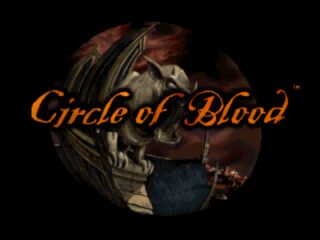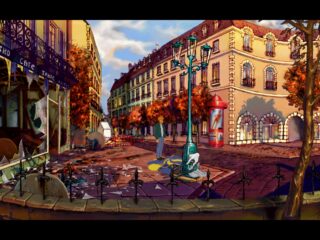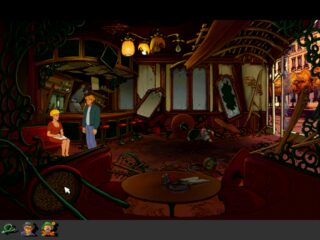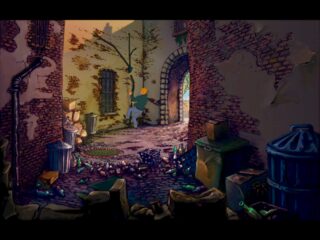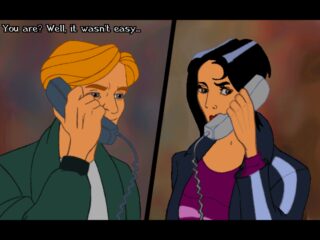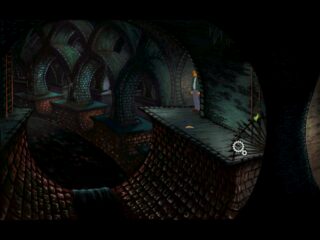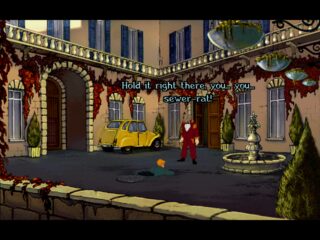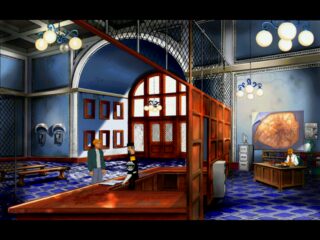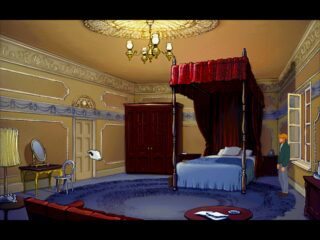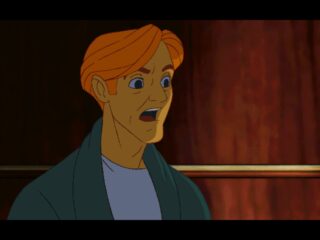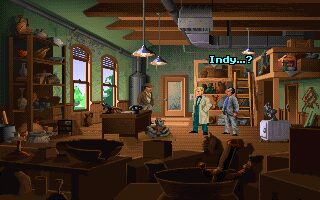Broken Sword: The Shadow of the Templars is an adventure game created by Revolution Software and released in 1996 for PC and Macintosh. The game, known in the US as Circle of Blood, was directed by Charles Cecil and designed by Charles Cecil, Dave Cummins, and Jonathan Howard.
Following the cyberpunk dystopia of Beneath A Steel Sky, Revolution Software shifted gears dramatically with Circle of Blood, delivering a globe-trotting conspiracy thriller that feels like a Dan Brown novel years before The Da Vinci Code was released. The game opens with American tourist George Stobbart witnessing a café bombing in Paris, immediately establishing the international intrigue that will drive the entire experience. What begins as a simple case of being in the wrong place at the wrong time evolves into an elaborate mystery involving the Knights Templar, ancient artifacts, and a secret society's modern machinations.
The gameplay follows the traditional point-and-click adventure formula that Revolution perfected in Beneath A Steel Sky, but Circle of Blood benefits from significantly improved production values and a more accessible design philosophy. The interface is clean and intuitive, eliminating the verb-based systems of old adventures in favor of context-sensitive interactions (Revolution Software already did this with their previous adventures). Players alternate between George and the photojournalist Nico Collard, each bringing different perspectives and skills to the investigation. The puzzle design strikes an excellent balance between logical deduction and inventory-based challenges, though some late-game sequences involving ancient mechanisms can prove frustrating.
Visually, Circle of Blood represents a significant leap forward from Revolution's previous work. The hand-drawn backgrounds are richly detailed and atmospheric, capturing everything from Parisian café culture to Irish countryside and Spanish villages with remarkable authenticity. The character animations convey personality and emotion effectively. The game's art direction perfectly complements its globetrotting narrative, making each location feel distinct and memorable.
Circle of Blood's greatest strength lies in its storytelling and pacing. Unlike the more linear structure of Beneath A Steel Sky, this adventure allows for more exploration and backtracking between locations, creating a genuine sense of investigation. The Templar conspiracy unfolds gradually, with each revelation building naturally from the previous discoveries. The game successfully balances humor with genuine tension, never allowing the lighter moments to undermine the central mystery.
Compared to contemporaries like The Curse of Monkey Island or Full Throttle, Circle of Blood takes itself more seriously while maintaining accessibility. It lacks the surreal humor of LucasArts adventures but compensates with more grounded characters and situations. The game shares DNA with Indiana Jones And The Fate Of Atlantis in its archaeological themes and globe-spanning adventure, though Circle of Blood's modern setting allows for different types of puzzles and interactions.
The game's influence on the adventure genre cannot be overstated. It demonstrated that traditional point-and-click adventures could still find commercial success in the mid-90s, inspiring other developers to continue supporting the genre. The seamless integration of story, character development, and puzzle design became a template for narrative-driven adventures that followed.
Circle of Blood stands as Revolution Software's masterpiece, successfully combining the studio's technical expertise with a compelling story, superb graphics, and excellent gameplay. For fans of story-driven adventures, Broken Sword: The Shadow of the Templars is a masterpiece you don't want to miss.

